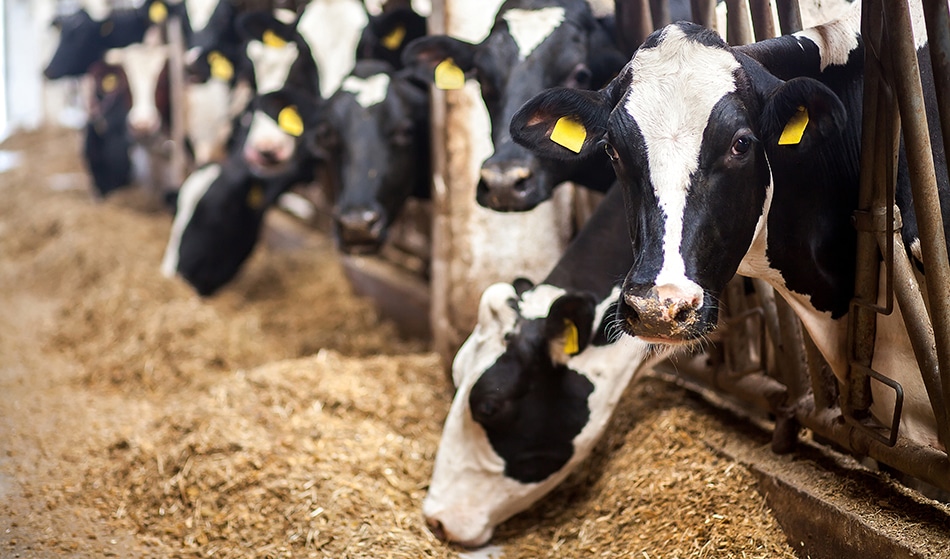ISO 15213 Anaerobic Clostridia Detection in Feed Samples
The ISO 15213 standard provides a stringent method for the detection and quantification of anaerobic clostridia in feed samples. This protocol is critical for ensuring food safety, particularly in animal feeds where the presence of these microorganisms can lead to spoilage or even pose health risks to animals.
The process involves several key steps: sample collection, preparation, and inoculation into anaerobic conditions suitable for clostridia growth. The media used is specifically designed to inhibit other competing microorganisms while allowing the targeted clostridial species to thrive. This ensures accurate detection of the pathogenic bacteria.
The testing methodology is highly sensitive and can detect even trace amounts of clostridia in feed samples. It employs a combination of microbiological techniques, including incubation at optimal temperatures for growth, followed by microscopic examination or colony counting on specialized media.
Quality managers and compliance officers rely on this service to ensure that their products meet strict regulatory standards. The results provide peace of mind knowing that the feed is free from harmful microorganisms, which is essential for maintaining animal health and ensuring food safety throughout the supply chain.
The analytical process adheres strictly to ISO 15213:2017 guidelines, ensuring consistent and reliable outcomes. This standardization is crucial in a global market where regulatory compliance is paramount. By using this method, laboratories can provide accurate reports that are internationally recognized and accepted by various authorities.
The service also includes detailed documentation of the testing process and results, which are invaluable for R&D engineers working on improving feed formulations or addressing potential contamination issues. This data can guide further research into more effective preservation methods and safer feed ingredients.
In summary, ISO 15213 Anaerobic Clostridia Detection is a cornerstone of food safety in the agricultural sector. It helps maintain high standards of quality and compliance, ensuring that animal feeds are safe for consumption by livestock.
Industry Applications
| Application Area | Description |
|---|---|
| Agricultural Feed Production | Detection of clostridia in feed samples helps prevent spoilage and contamination, ensuring safe and nutritious feeds for livestock. |
| Animal Nutrition Research | Supports the development of novel feed additives and formulations by providing data on microbial content. |
| Quality Assurance in Feed Mills | Ensures that final products meet stringent hygiene standards set by regulatory bodies. |
| Retailer Compliance Programs | Provides evidence of compliance with food safety regulations, enhancing consumer confidence. |
| Packaging and Transport Companies | Guarantees the integrity of feed products during transportation by ensuring they are free from harmful microorganisms. |
| Regulatory Bodies | Supports inspections and audits by providing accurate data on clostridial contamination levels in feeds. |
International Acceptance and Recognition
The ISO 15213 standard for detecting anaerobic clostridia is widely accepted across the globe. Its use in agricultural feed microbiology testing ensures that results are consistent, reliable, and comparable internationally.
Many countries have adopted this method as a baseline for food safety regulations, recognizing its importance in maintaining high standards of hygiene in animal feeds. Laboratories accredited to perform these tests often find their findings accepted by regulatory agencies worldwide.
The standard is recognized not only within the agricultural sector but also extends its influence into related industries such as pet food manufacturing and aquaculture feed production. The consistent application of this protocol ensures that all stakeholders have a common reference point for evaluating microbial safety in feeds.
Given the global nature of trade in animal feed products, international acceptance of ISO 15213 results is crucial. Laboratories adhering to these guidelines can streamline compliance processes and facilitate smoother trading relationships between countries.
The widespread adoption of this method also fosters trust among consumers who are increasingly concerned about the safety of their food supply chains. By implementing rigorous testing protocols like ISO 15213, manufacturers and suppliers demonstrate their commitment to maintaining the highest standards of quality and safety.
Use Cases and Application Examples
The use case for ISO 15213 Anaerobic Clostridia Detection extends beyond the laboratory into various operational scenarios within the agricultural sector. Here are some real-world applications:
Agricultural Feed Manufacturing Plants: Regular testing is essential to monitor production processes and ensure that all batches meet safety standards. This helps in maintaining a consistent quality of feed products.
R&D Laboratories: Researchers use this method to explore new ingredients or formulations for feeds, ensuring they are free from harmful microorganisms before introducing them into the market.
Animal Health Clinics: Veterinarians may request these tests if an outbreak of clostridial infections is suspected in livestock. This helps in diagnosing and treating affected animals promptly.
Export Companies: Exporting countries often require proof of microbial safety to satisfy import regulations. ISO 15213 results are frequently used for this purpose, ensuring that exported feeds meet international standards.
Packaging and Transport Companies: They use the test results to verify that feed products remain uncontaminated during storage and shipment, thus maintaining their quality and safety.





